GROWING PERFORMANCE AND TALENT THROUGH LEARNING AND DEVELOPMENT
We provide insight-driven advice and tailored solutions that enable our clients to maximize performance and get the best possible results from their learning and development activities.
Our industry-led experts can help you transform your people strategy to:
- Attract and retain the best talent
- Drive high performance
- Develop leadership and manage diversity
Our tailored approach delivers effective results that reflect the needs of your business because we understand your culture, your environment and your budget.
The steps we follow when looking at our clientele’s learning & development strategy
1. Examine your company’s current l&d strategy and pinpoint any areas that need improvement
Your business environment, strategies and workforce are evolving by the minute. Companies that pursue a tactical rather than strategic approach to L&D may find their efforts are coming up short. Without a strategic framework and a means of measuring it, employee and executive goals often remain unmet.
2. Determine the key transformation areas
The good news is that your management team needs the learning and development function more than ever. Most executives consider it “very important” to maximize organizational talent and empower employees. Furthermore, most identify “capability building” as a top strategic priority in their organizations. The skills executives deem most important to performance include strategy, operations, marketing and sales.
3. Align the goals of the organization, the leadership and the workforce
Aberdeen Group suggests defining the core competencies required to achieve top performance and using this information as a guideline for developing and evaluating talent.
4. Elevate learning programs as a means to flatten the business hierarchy
Reach across the aisle to all lines of business and secure a seat at the table during quarterly reviews. When learning transcends the organizational chart, all participants see themselves as “owners.”
5. Employ effective strategies for developing and sharing knowledge
Successful companies tailor their programs rather than relying on a uniform program for everyone, combining traditional learning methods with mobile technology, social media and video to enhance the learning experience. McKinsey believes a “blended” approach, combining in-class learning with real-work situations and coaching, offers the best results.
6. Establish objectives with results that are measurable and repeatable
The only way to determine if a learning program is effective is to focus on metrics, measuring participant progress against specific targets to identify successes and performance gaps. Your CFO will thank you for clear reports on how your programs influence key business performance indicators such as NPS scores, satisfaction ratings and employee retention.
7. Elevate the profile of your l&d program
For most companies, developing a “learning culture” within the next two years is a priority. This suggests there is plenty of opportunity to elevate your company’s L&D efforts and your personal profile.


